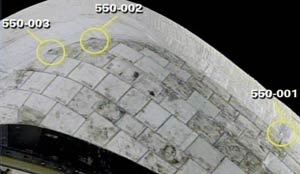
The Space Shuttle is aloft once more and I've been busy following events in sport. So apologies.
Astronauts on board the space shuttle Discovery will attach an extension to the orbiting International Space Station during a spacewalk today, in what is said to be one of the most difficult tasks ever carried out in space.Since then they've had a spacewalk to confirm the shuttle was okay.
Discovery, which docked last night local time, will remain at the ISS for eight days, during which its crew will perform three spacewalks.
In the first, Christer Fuglesang, a Stockholm physicist and the first Swede in space, along with Robert Curbeam, the mission specialist, will attach a two-tonne, $11 million cube-shaped addition to the space station.
During the subsequent spacewalks astronauts will rewire the US-made portion of the space station, which will involve cutting off the power and activating extra solar panels to double the current electrical output.
The National Aeronautics and Space Administration says it will be the trickiest manoeuvre ever carried out in space.
Meantime, Nasa was deciding whether there was any need for further inspection of the shuttle’s left wing after a sensor detected a "very low impact" less than three hours after docking.
Two astronauts had used a robotic arm to examine the wing leading edge. But John Shannon, chairman of the mission management team, said the impact was considered to be of concern but the agency wanted to play if safe.
"It looks like something happened," said Mr Shannon, adding that the wing looked fine during a focused inspection performed Sunday.
Two astronauts climbed out of a hatch on the international space station Tuesday, starting a difficult six-hour spacewalk during which they will guide and bolt into place a new 2-ton addition to the orbiting lab.So all is well.
U.S. astronaut Robert Curbeam, a veteran spacewalker, and the European Space Agency's Christer Fuglesang, who is making his first spacewalk, stepped outside at 3:31 p.m. EST as the space station flew 220 miles over central Europe.
"I've got my head out the hatch," Curbeam radioed commander Mark Polansky.
Polansky, who flew on a 2001 shuttle mission during which Curbeam took three spacewalks, responded, "OK, Buddy. Welcome back. It has been a long time."
Right after the spacewalk began, a hand control unit was dislodged on Curbeam's backpack attachment used in case he becomes untethered, but the problem was quickly fixed. Spacewalkers are tethered at all times.

No comments:
Post a Comment